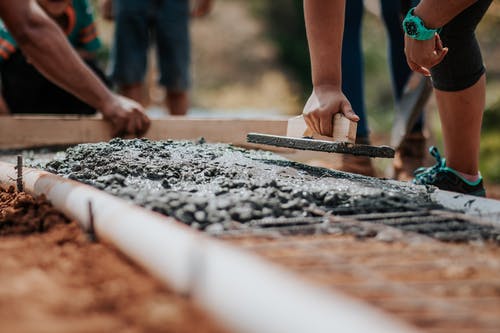What Is the Purpose of Underpinning?

Underpinning, which is a process that supports buildings, involves deepening the foundation to
make the base of the building rest on a deeper soil layer. It can also strengthen a bowed or
settled basement. Its installation is complex and requires a variety of tools. As a result, it is
necessary to notify adjacent buildings prior to underpinning. Underpinning will not solve every
foundation problem.
The method often requires the use of a pile, or “piledraft”, in many cases. Piles are drilled into
ground to a specified depth and connected to reinforced needle beams to support the wall using
a piledraft. These are then connected to concrete and a link beam is created to join all the
needles. Once the piles have been placed, a concrete ring beam with traverse and lateral
connections is poured on top.
Underpinning has been around for centuries. The method of foundation improvement was first
developed in the 14th century by the Italian humanist Leon Battista Alberti. This technique
allows strengthening weak structures and increasing the building’s load-bearing capacity. Some
applications can be used to strengthen the foundation of a home or improve the strength and
stability of a skyscraper’s base. New York’s Hotel Commodore was built in 1921 over the Grand
Central Station underground structure. It was reopened as the Grand Hyatt in 2004.

Underpinning is a crucial step in protecting a building from settlement. It is important that you
identify and track vulnerable areas in a building. Foundations can settle for a variety of reasons,
including uneven loads, uneven topography and unsymmetrical loading. Tree roots may also be
responsible. A home’s foundation can also be affected by adding more stories or changing the
service load.
Underpinning can be used to reinforce a foundation or create a new basement floor.
Underpinning is done in order to increase the foundation soil’s bearing capacity and stop
differential settlement. Underpinning can also be used to prevent waterlogging and build
basement floors. Underpinning is not a permanent solution. And since underpinning is so
effective, it’s an essential component of structural maintenance.
Mass concrete is the most commonly used method for underpinning. It involves injecting a large
quantity of concrete or resin into the ground beneath the foundation. Concrete or grout expands
the ground and compresses it beneath the foundation. But unlike other types of underpinning, it
is not quantifiable. This is because the amount of grout and resin required to complete this
process can often exceed the initial estimate. Mass concrete is not appropriate for all ground
conditions.
A thorough assessment of the foundation of your building is essential before underpinning can
begin. A professional home foundation contractor can provide a detailed assessment and the
right equipment to do the job. In some cases, it can also be used to build a basement under an
existing building. Underpinning is a great method to strengthen foundations that aren’t sound.
This is also a great way to fix any structural issues.
Underpinning, which is a process that supports buildings, involves deepening the foundation to make the base of the building rest on a deeper soil layer. It can also strengthen a bowed or settled basement. Its installation is complex and requires a variety of tools. As a result, it is necessary to notify adjacent buildings prior…

